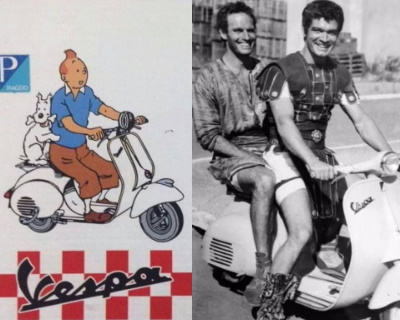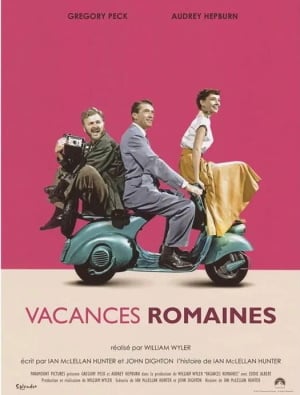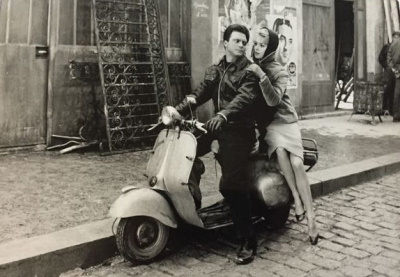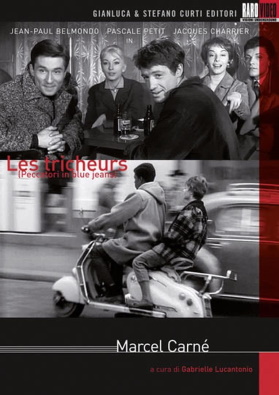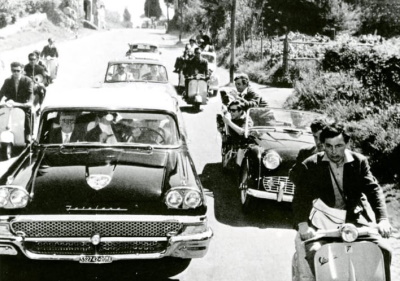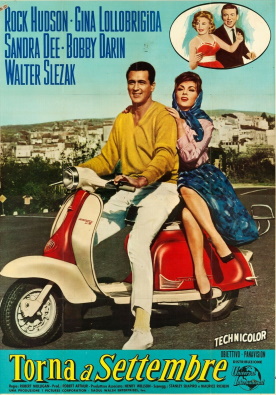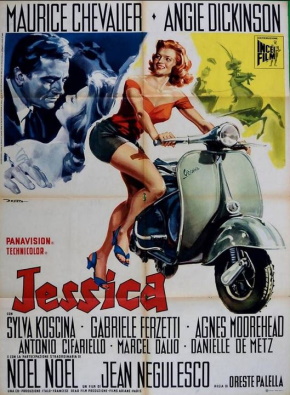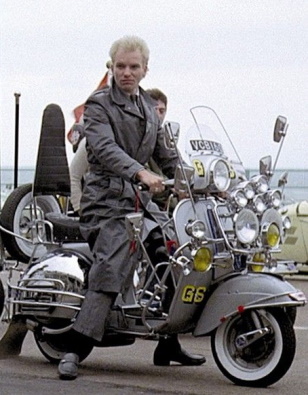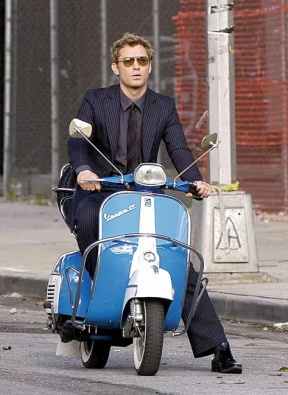
Brand presentation Vespa
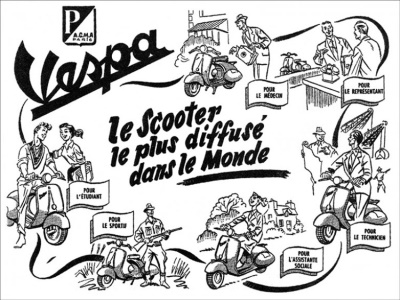
Le Vespa, the symbolic scooter
Vespa is a trademark and line of scooters patented on April 23 par the society Piaggio & Co, SpA The name of Vespa, means "wasp" in Italian.
Le Vespa was born from the meeting of two stories: that of an industrial sector in which the Pontedera company is inserted, and that of the social trajectory of the inventor: creating a "easy to produce and cheap" vehicle. At the end of the Second World War, the Italian manufacturer Piaggio, specializing in aviation for thirty years, is in a delicate situation. Italy no longer having the right to build aircraft, the company must find a conversion.
Vespa was an original, useful and beautiful product that immediately won the hearts of post-war audiences. As soon as it appeared in a country undergoing post-war reconstruction, Vespa represented the joy of living and the desire to look to the future.
The innovation of Vespa as a vehicle has naturally extended to urban culture, which continues to make Vespa an icon today.
This simple and economical two-wheeler was produced in 20 million copies. Even today, 80 scooters are manufactured at the historic site of the group Piaggio near Pisa.
Le Vespa is undoubtedly the most famous scooter in the world. For several decades, at least until the end of the 1980s, when Japanese competition became very aggressive, its reputation was such that in the collective imagination the proper name Vespa gradually prevailed over the common name scooter.
Le premier Vespa
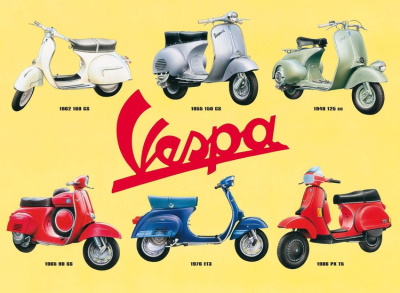

The model Vespa 98cc Series I is presented to the public at Golf-Club from Rome in April 1946. Features of the models are a cast iron horizontal cylinder 2 stroke engine, baffled piston and forced air cooling. The exact displacement is 98 cc, hence the name.
The first scooter Vespa manufactured in 2 thousand copies the first year, has singular characteristics that distinguish it from other motorcycles. The wheels are fixed laterally (as with aircraft landing gear, presumably a legacy of the "aeronautical" origin of the Vespa (wasp in Italian)), which makes it easy to take them apart; the fork becomes a simple arm, which notably facilitates the changing of the inner tube and tyre. The motor is protected par the hull and is mounted directly on the rear wheel par the intermediary of the gearbox, which frees up a place for the feet at the front and makes it possible to protect the legs par a fairing (the transmission chain having been removed). The opposite rear wing allows the fitting of a small boot or the installation of a spare wheel.
Le Vespa 98 will allow Piaggio to be reborn from its ashes. VSar the reception from the public is such that Piaggio will constitute its own network and do without the network spear. At the end of 1949, it will be 35 thousand models sold to exceed 000 million models ten years later.
Drive a Vespa is not only an innovative choice for reasons of efficiency and low fuel consumption; it is rather an approach to life. Since the first campaigns of the brand in the 50s and 60s, Vespa makes us dream of escaping the daily routine, of reaching distant destinations and rediscovering contact with a clean, happy and living world.
The Vespa Clubs
In the aftermath are created the first Vespa Clubs, associations that bring together enthusiasts of Vespa for all kinds of events (walks, discussions, auctions, etc.). Following the creation of the first club in Italy, in Viareggio, in 1949, lovers of Vespa around the world were quick to follow suit: in 1952, a European union (five years before the Treaty of Rome!) of drivers of Vespa was born, bringing together Italian, French, German, Swiss, Dutch and Belgian clubs.
More than 15 lovers of Vespa coming from 27 countries gathered in Italy for the big parade. The 2024 edition was held in Italy, in Pontedera from April 18 to 21. The 2025 edition will be held in Gijon, Spain from May 1 to 4.
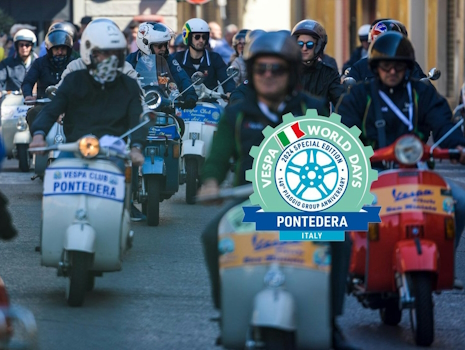
Le Vespa, star movies
Le Vespa also owes its success to its use in the cinema:
Gregory Peck et Audrey Hepburn drive through Rome to Roman Holiday (1953) on the Vespa 125.
Brigitte Bardot et Franco Interlenghi in In case of misfortune (1957)
Dance the Cheaters (1958), Laurent Terzieff travels around Paris in Vespa
Marcello Mastroianni (paparazzi) chasing Anita ekberg in La Dolce Vita (1960)
Rock Hudson et Gina lollobrigida are walking on a Vespa in The September Rendezvous (1961)
In order to Jessica (1962), Angie dickinson moves on her Vespa and stirs up trouble in a Sicilian village.
Sting in Quadrophenia aboard a Vespa very chrome and customized in 1973
Vous pouvez voir Jude Law stroll around New York Vespa with Sienna Miller to the Irresistible Alfie (2004)
